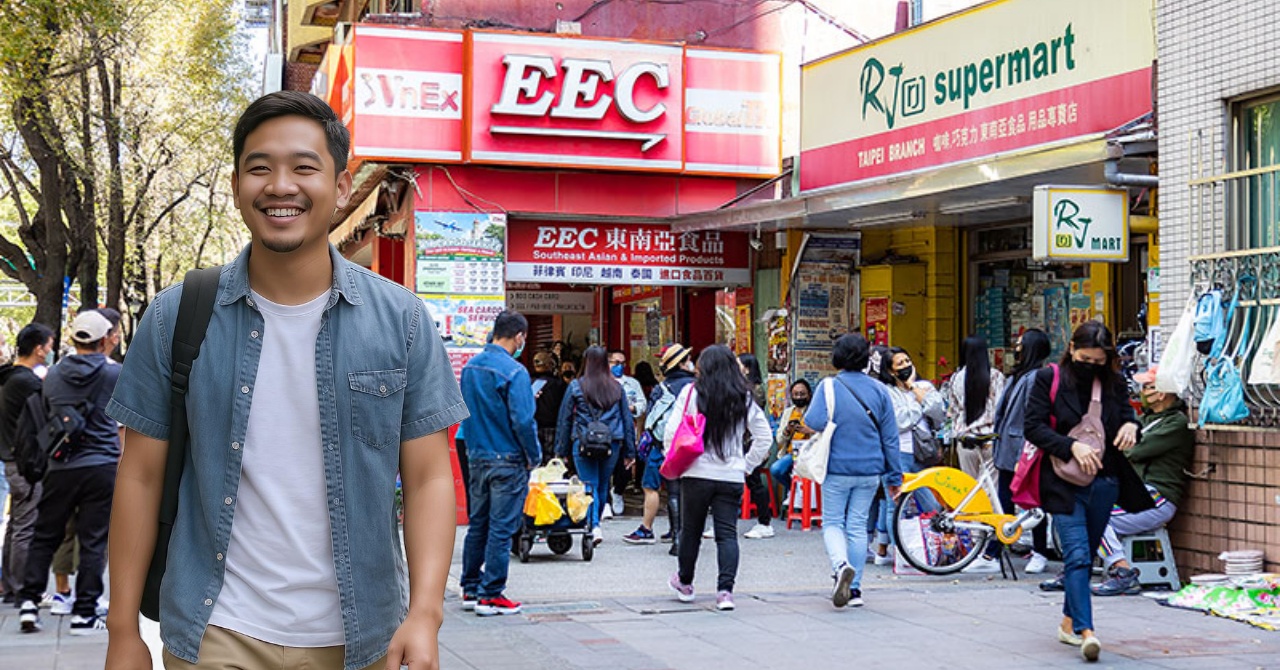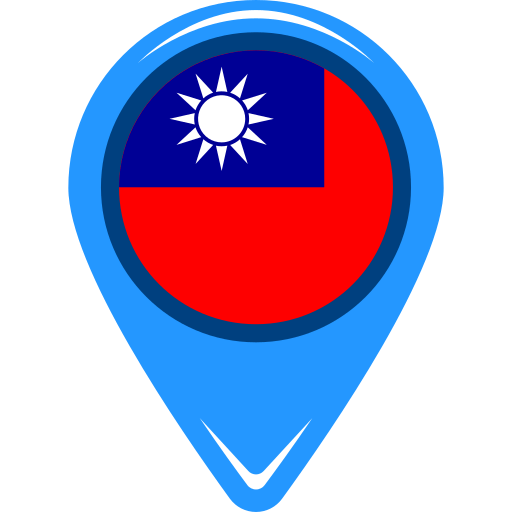The first time I heard of “Little Manila” after becoming an OFW in Taiwan, I knew I had to go. I had been here for just a few weeks, feeling both excited and homesick, when my coworker casually said, “Sa Sunday, kita tayo sa Little Manila.”
I didn’t expect that a few blocks in Taipei could feel so familiar—and yet, stepping into that space was like walking straight into a slice of Manila itself. The sounds, the scents, and the warmth of conversation all wrapped around me, reminding me of home in subtle, unexpected ways.

The Heart of Little Manila: Location & Atmosphere
Where it is:
You’ll find Little Manila tucked along Zhongshan North Road Section 3, especially between Minzu East Road and Nong’an Street, and spilling into Dehui Street in Taipei.
Imagine a place where you hear Tagalog almost everywhere, smell barbecue sizzling on the side of the road, and see OFWs laughing over halo-halo like it’s a Sunday back home. Whether you’re new in Taiwan or just missing a taste of home, this spot delivers something more than comfort food—it offers community.
What to Expect on Your First Visit
- Community Hotspots
- St. Christopher’s Church
Sundays are special here. Tagalog mass draws in crowds of Filipinos—some praying, some reconnecting, and many simply enjoying a quiet moment before lunch. After mass, the street outside fills with life. - King Wan Wan Shop Mall
Two floors of everything Pinoy: gadgets, salon services, gold jewelry, remittances, and—best of all—food. Upstairs, you’ll find sizzling platters of sisig and trays of pancit, often served with smiles and small talk. You won’t feel like a stranger. - Southeast Asian Supermarkets
Need UFC banana ketchup, Lucky Me pancit canton, or bagoong? Shops like EEC Elite Express and RJ Supermart have you covered.
Cultural Nuances You’ll Notice
Sundays are everything.
This is when the whole community shows up. Groups gather at Maji Square for pageant rehearsals, street dancing, or salu-salo-style picnics. Even if you just plan to stroll, you’ll end up staying longer.
Everyone’s warm.
You’ll be greeted with “Kumusta kabayan?” by strangers. Vendors might give you free samples. Conversations with fellow OFWs can start over turon and end in new friendships.
Tips for First-Time Visitors
- Come hungry – Try adobo, tocino with egg and rice, or pancit. For dessert, go for halo-halo or kakanin.
- Speak a little Tagalog (if you can) – Even if you’re not Filipino, a simple “Salamat” goes a long way.
- Bring cash – Not all stalls accept cards.
- Come early on Sundays – It gets packed by noon.
- Be respectful – This isn’t just a market—it’s a second home for many.
- Ask for recommendations – People will gladly point you to the best lumpia or load corner.
What Makes Little Manila Unique
Little Manila is more than a place to buy groceries or eat home-style meals—it’s a living story of Filipino migration. Here, you feel both the ache of being away and the joy of community.
It reflects:
- Our history – Rooted in the 1990s boom of OFWs, especially caregivers and factory workers.
- Our culture – Through church, fiestas, food, and language.
- Our strength – A reminder that we always find ways to bring a piece of home wherever we go.
How to Connect with the Community
- Attend Sunday Mass at St. Christopher’s Church
It’s welcoming, heartfelt, and full of post-mass activities. - Mingle in King Wan Wan Mall
Say hi to store owners or kababayans at the food court. - Join gatherings in nearby parks
Even if you’re just watching, you’ll feel included. - Look out for fiestas or events
You might get invited to sing karaoke or join a shared meal. - Be curious, not shy
Ask questions. Try new food. Listen to stories. That’s how community starts.
Frequently Asked Questions
Q: What cultural experiences can I expect in Little Manila?
- Tagalog mass at St. Christopher’s Church
- Group picnics and dancing in Maji Square
- Filipino food courts and stores
- Friendly conversations and open invitations
Q: How do Filipino residents maintain their traditions?
- Through church gatherings, especially on Sundays
- Celebrating holidays like Christmas and fiestas
- By sharing meals and stories in public spaces
- Informal networks that support one another
Q: What are must-try foods?
- Tocino with garlic rice
- Adobo (pork or chicken)
- Pancit (Bihon or Canton)
- Halo-halo
- Snacks like lumpia, bibingka, turon
Q: How does Little Manila reflect Filipino migration history?
- Born from the growth of OFW workers in the 1990s
- A safe, shared space to preserve Filipino identity
- A bridge between Taiwan and the Philippines
Q: How can I connect with the community?
- Join mass or shop on Sundays
- Say hi at King Wan Wan
- Watch or join cultural practices
- Share stories and meals when invited
OFW Story: Sunday Stories from Little Manila
Every Sunday, Filipinos in Taipei gather around St. Christopher’s Church to worship, reconnect, and share home-cooked meals.
The nearby Won Won Building transforms into a lively hub filled with Filipino dishes, remittance centers, and stories of sacrifice and ambition.
Vendors welcome visitors with free tastes and warm conversations, turning food into a bridge between cultures and memories.
Many OFWs share how they slowly adapted to Taiwanese flavors, while others remain loyal to adobo, sinigang, and halo-halo.
Through shared meals, laughter, and community savings circles like ROSCA, Little Manila continues to grow as a space of comfort, resilience, and everyday strength.
Final Thoughts
Visiting Little Manila in Taiwan is like stumbling upon a familiar song in a foreign land. It warms you up from the inside out. It’s not just a neighborhood—it’s a reminder that even thousands of miles away, we create spaces that feel like home.
If you’re a fellow OFW, or just someone curious about Filipino culture in Taiwan, I hope your first visit is as heartwarming and unforgettable as mine.
